In the realm of artificial intelligence (AI), recent advancements have given rise to a new paradigm known as Causal AI. While large language models (LLMs) such as GPT-3 have garnered significant attention for their impressive capabilities, Causal AI represents a distinct approach that focuses on understanding cause-and-effect relationships within data. In this blog post, we will delve into the concept of Causal AI, explore its differences from LLMs, and discuss its potential applications and implications.
Understanding Causal AI:
Causal AI revolves around the principle of causality, which seeks to uncover the relationships between causes and effects in data. Unlike traditional machine learning approaches that primarily focus on correlation, Causal AI aims to identify and understand the underlying mechanisms that drive observed phenomena. By discerning causal relationships, Causal AI models can make more robust predictions, infer counterfactuals, and provide insights into how interventions may impact outcomes.
At the heart of Causal AI are causal inference techniques, which leverage statistical methods, graphical models, and causal reasoning to uncover causal relationships from observational and experimental data. These techniques enable Causal AI models to go beyond mere prediction and offer a deeper understanding of the mechanisms at play in complex systems.
Contrasting Causal AI with Large Language Models:
While both Causal AI and LLMs fall under the umbrella of artificial intelligence, they represent distinct approaches with different objectives, methodologies, and applications.
-
Objective:
- Causal AI: The primary objective of Causal AI is to uncover causal relationships within data, enabling a deeper understanding of how variables influence each other and how interventions may alter outcomes.
- Large Language Models: LLMs, on the other hand, are designed primarily for natural language processing tasks, such as text generation, translation, summarization, and question answering. While LLMs may implicitly capture some causal relationships present in text data, their primary focus is on language understanding and generation rather than causal inference.
-
Methodology:
- Causal AI: Causal AI relies on causal inference techniques, such as randomized controlled trials, instrumental variable analysis, propensity score matching, and structural equation modeling. These techniques aim to uncover causal relationships by distinguishing between correlation and causation, taking into account confounding factors and potential biases.
- Large Language Models: LLMs are typically based on deep learning architectures, such as transformers, which learn to predict the next word in a sequence based on the context provided by the preceding words. While LLMs may exhibit impressive language understanding and generation capabilities, they do not explicitly model causal relationships and may struggle to infer causality from text data alone.
-
Applications:
- Causal AI: Causal AI has diverse applications across various domains, including healthcare, economics, renewables, oil and gas, property, social science, marketing, and policy analysis. For example, in healthcare, Causal AI can help identify risk factors for diseases, evaluate the effectiveness of treatments, and inform personalized intervention strategies.
- Large Language Models: LLMs are predominantly used for natural language processing tasks, such as text generation, translation, summarization, sentiment analysis, and chatbots. While LLMs excel at these tasks, they may not be well-suited for applications that require causal inference and understanding of underlying mechanisms.

In the realm of artificial intelligence (AI), recent advancements have given rise to a new paradigm known as Causal AI. While large language models (LLMs) such as GPT-3 have garnered significant attention for their impressive capabilities, Causal AI represents a distinct approach that focuses on understanding cause-and-effect relationships within data. In this blog post, we will delve into the concept of Causal AI, explore its differences from LLMs, and discuss its potential applications and implications.
Understanding Causal AI:
Causal AI revolves around the principle of causality, which seeks to uncover the relationships between causes and effects in data. Unlike traditional machine learning approaches that primarily focus on correlation, Causal AI aims to identify and understand the underlying mechanisms that drive observed phenomena. By discerning causal relationships, Causal AI models can make more robust predictions, infer counterfactuals, and provide insights into how interventions may impact outcomes.
At the heart of Causal AI are causal inference techniques, which leverage statistical methods, graphical models, and causal reasoning to uncover causal relationships from observational and experimental data. These techniques enable Causal AI models to go beyond mere prediction and offer a deeper understanding of the mechanisms at play in complex systems.
Contrasting Causal AI with Large Language Models:
While both Causal AI and LLMs fall under the umbrella of artificial intelligence, they represent distinct approaches with different objectives, methodologies, and applications.
-
Objective:
- Causal AI: The primary objective of Causal AI is to uncover causal relationships within data, enabling a deeper understanding of how variables influence each other and how interventions may alter outcomes.
- Large Language Models: LLMs, on the other hand, are designed primarily for natural language processing tasks, such as text generation, translation, summarization, and question answering. While LLMs may implicitly capture some causal relationships present in text data, their primary focus is on language understanding and generation rather than causal inference.
-
Methodology:
- Causal AI: Causal AI relies on causal inference techniques, such as randomized controlled trials, instrumental variable analysis, propensity score matching, and structural equation modeling. These techniques aim to uncover causal relationships by distinguishing between correlation and causation, taking into account confounding factors and potential biases.
- Large Language Models: LLMs are typically based on deep learning architectures, such as transformers, which learn to predict the next word in a sequence based on the context provided by the preceding words. While LLMs may exhibit impressive language understanding and generation capabilities, they do not explicitly model causal relationships and may struggle to infer causality from text data alone.
-
Applications:
- Causal AI: Causal AI has diverse applications across various domains, including healthcare, economics, renewables, oil and gas, property, social science, marketing, and policy analysis. For example, in healthcare, Causal AI can help identify risk factors for diseases, evaluate the effectiveness of treatments, and inform personalized intervention strategies.
- Large Language Models: LLMs are predominantly used for natural language processing tasks, such as text generation, translation, summarization, sentiment analysis, and chatbots. While LLMs excel at these tasks, they may not be well-suited for applications that require causal inference and understanding of underlying mechanisms.

In a recent application in the renewables industry, Causal AI, with its emphasis on understanding cause-and-effect relationships within data, holds great potential for optimizing utility solar farm analytics and driving positive outcomes in the renewable energy sector. Here’s how:
-
Predictive Maintenance:
Causal AI can enable predictive maintenance strategies for solar farm equipment by identifying the causal factors contributing to equipment failures. By analyzing historical data on equipment performance, weather conditions, and maintenance activities, Causal AI models can uncover the causal relationships between various factors and equipment failures. This understanding allows operators to predict potential failures before they occur, schedule maintenance proactively, and minimize downtime, ultimately improving the reliability and efficiency of solar farm operations.
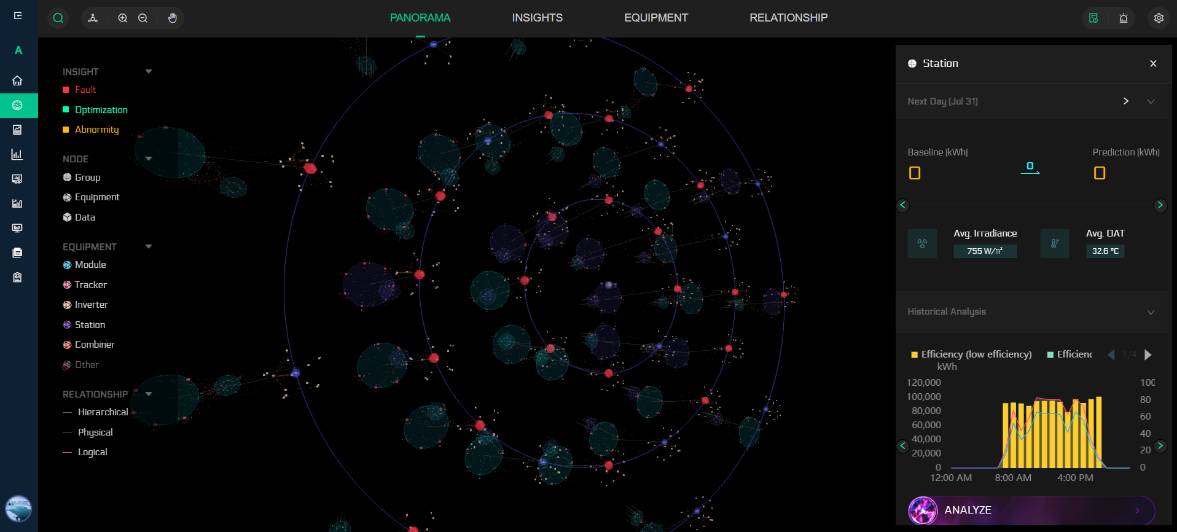
-
Energy Optimization:
Causal AI can help optimize energy production and maximize the efficiency of solar panels by identifying the causal factors influencing energy generation. By analyzing data on solar irradiance, panel orientation, temperature, and environmental conditions, Causal AI models can uncover the causal relationships between these factors and energy output. This insight enables operators to optimize panel placement, adjust tilt angles, and implement shading strategies to maximize energy production. Additionally, Causal AI can help identify inefficiencies in energy distribution and transmission, allowing operators to minimize losses and improve overall system efficiency.
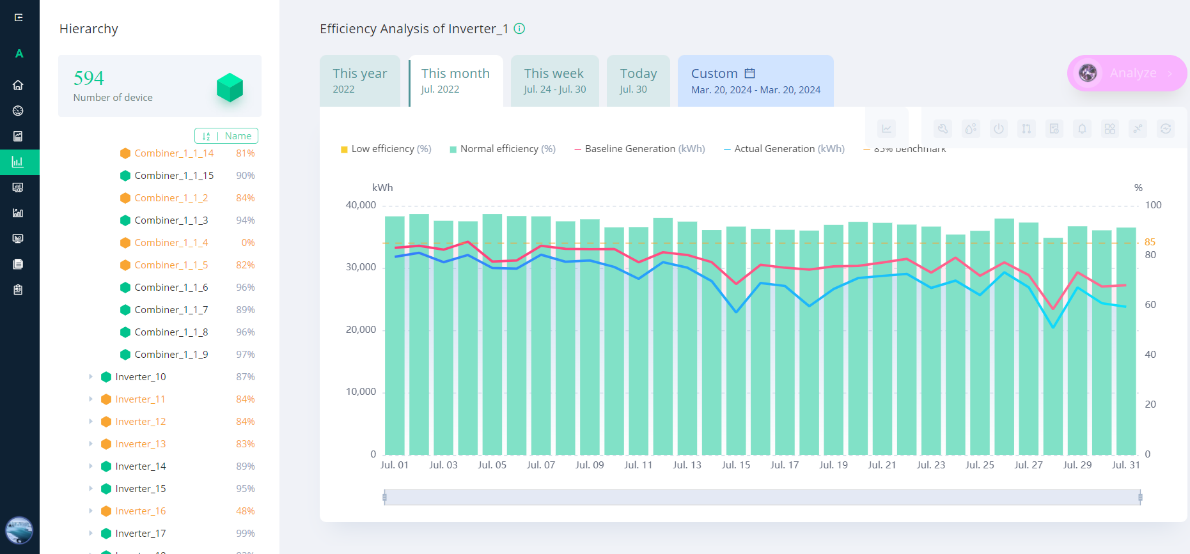
-
Fault Detection and Diagnostics:
Causal AI can facilitate fault detection and diagnostics in solar farm systems by identifying the causal factors contributing to system anomalies and failures. By analyzing data from sensors, inverters, and monitoring devices, Causal AI models can uncover the causal relationships between various system parameters and performance metrics. This understanding allows operators to detect and diagnose faults more accurately, identify root causes of problems, and implement targeted remediation strategies to minimize downtime and optimize system performance.
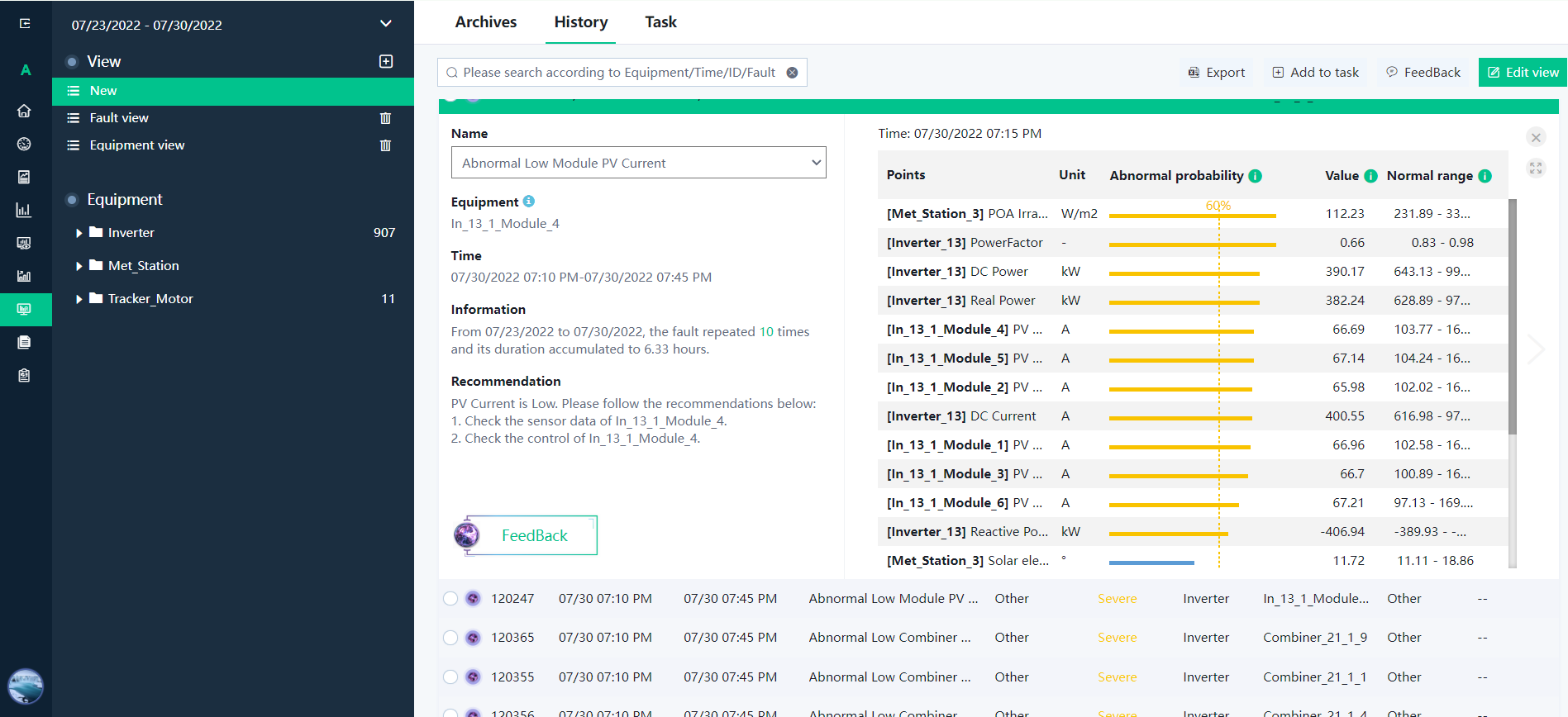
-
Resource Allocation:
Causal AI can optimize resource allocation and operational planning for solar farm management by identifying the causal factors influencing resource utilization and demand patterns. By analyzing data on energy consumption, grid demand, weather forecasts, and market conditions, Causal AI models can uncover the causal relationships between these factors and resource allocation decisions. This insight enables operators to optimize scheduling, dispatch, and resource allocation strategies to meet demand fluctuations, reduce costs, and maximize revenue generation.
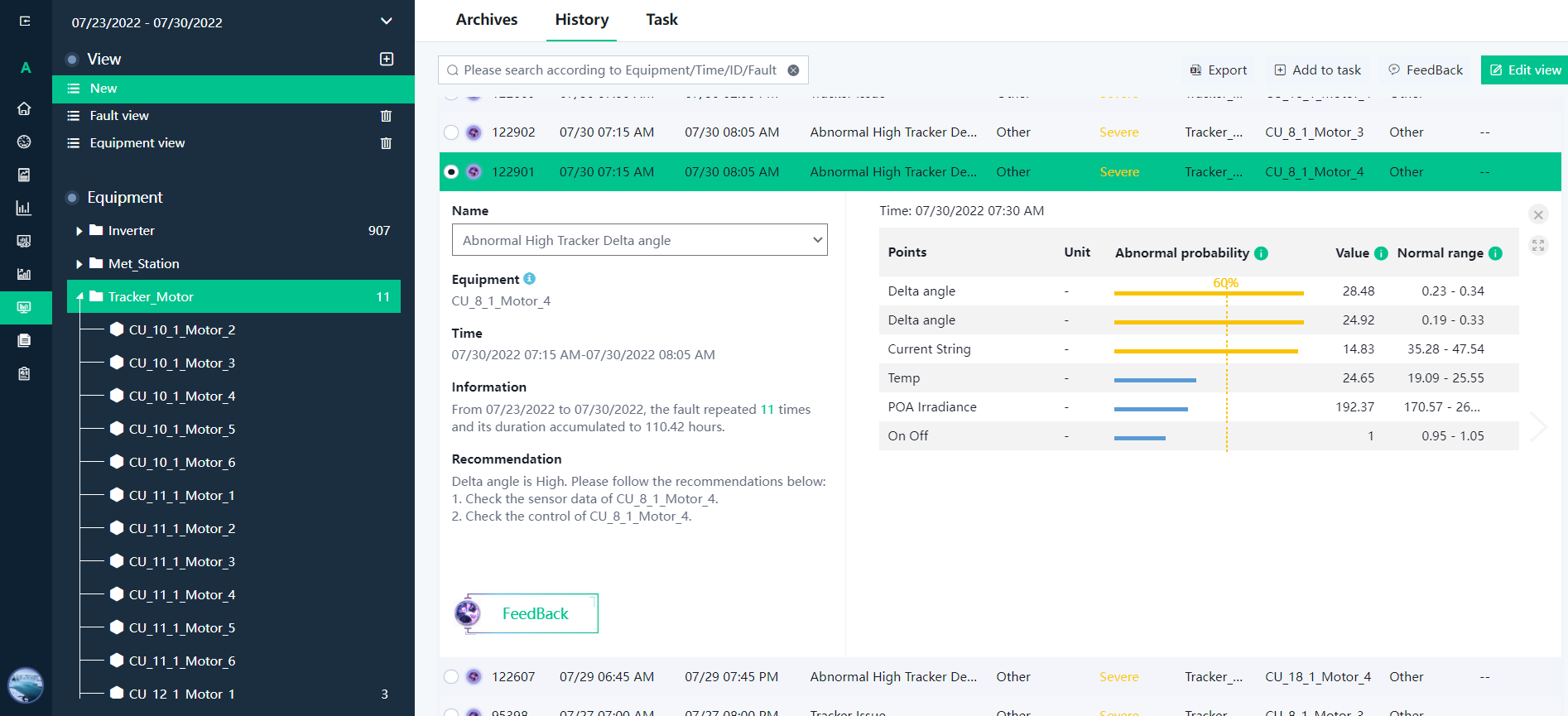
-
Performance Optimization:
Causal AI can optimize the performance of solar farm systems by identifying the causal factors influencing system efficiency and output. By analyzing data on equipment performance, maintenance activities, weather conditions, and environmental factors, Causal AI models can uncover the causal relationships between these factors and system performance metrics. This understanding allows operators to identify opportunities for performance improvement, implement targeted optimization strategies, and achieve higher levels of efficiency and productivity.
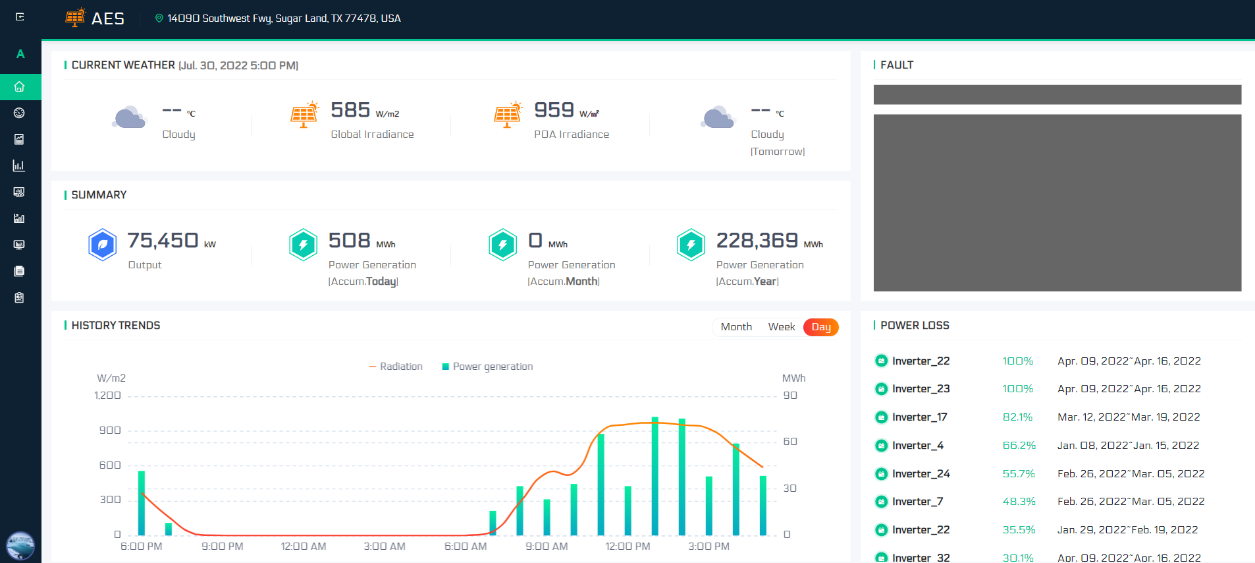
Conclusion:
In conclusion, Causal AI offers significant potential for driving positive outcomes in utility solar farm analytics by uncovering causal relationships within data and enabling more informed decision-making. From predictive maintenance and energy optimization to fault detection and resource allocation, Causal AI can help operators maximize the reliability, efficiency, and performance of solar farm systems. By harnessing the power of Causal AI, utility solar farm operators can overcome operational challenges, minimize risks, and unlock new opportunities for innovation and growth in the renewable energy sector.
However, the adoption of Causal AI also raises important ethical, legal, and societal implications. For example, ensuring fairness, transparency, and accountability in the use of causal inference techniques is crucial to mitigate the risk of unintended consequences and bias. Moreover, addressing data quality, selection bias, and confounding factors is essential to ensure the validity and reliability of causal inference results.

